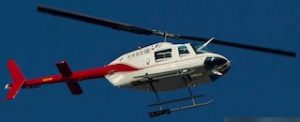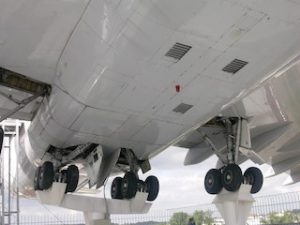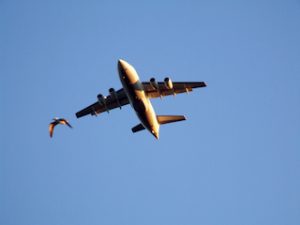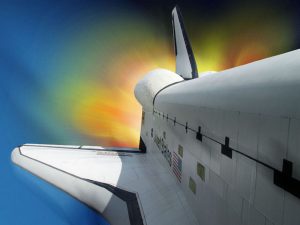The Basic Aeronautical Knowledge You Require
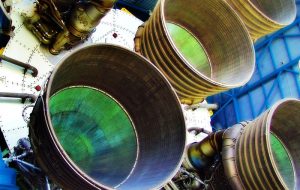 Aeronautics is the study and practice of flight, focusing on the design, development, and operation of aircraft. For anyone interested in aviation, whether as a pilot, engineer, or aviation enthusiast, acquiring basic aeronautical knowledge is essential. This knowledge encompasses a wide range of topics, from understanding how aircraft fly to the principles of navigation and the operation of aircraft systems. Mastery of these fundamentals lays the foundation for further learning and enables individuals to safely and effectively operate or maintain an aircraft.
Aeronautics is the study and practice of flight, focusing on the design, development, and operation of aircraft. For anyone interested in aviation, whether as a pilot, engineer, or aviation enthusiast, acquiring basic aeronautical knowledge is essential. This knowledge encompasses a wide range of topics, from understanding how aircraft fly to the principles of navigation and the operation of aircraft systems. Mastery of these fundamentals lays the foundation for further learning and enables individuals to safely and effectively operate or maintain an aircraft.
In this in-depth article, we will explore the key areas of basic aeronautical knowledge, including aerodynamics, aircraft structures, propulsion, flight controls, weather, air navigation, and aviation regulations. By understanding these essential concepts, you will be better prepared to pursue a career in aviation or simply deepen your appreciation for the science of flight.
Aerodynamics: How aircraft fly
The most important component of basic aeronautical knowledge is aerodynamics, the study of how air interacts with a solid object like an aircraft. Aerodynamics explains how forces like lift, drag, weight, and thrust influence the movement of an aircraft through the air.
- Lift is the upward force that allows an aircraft to overcome gravity and rise into the air. It is generated by the flow of air over the wings, which are designed to create a pressure difference between the upper and lower surfaces.
- Drag is the resistance an aircraft faces as it moves through the air. Engineers work to minimise drag by designing sleek, aerodynamic shapes that allow air to flow smoothly around the aircraft.
- Thrust is the forward force that propels the aircraft, usually provided by engines or propellers.
- Weight is the downward force caused by gravity, which the aircraft’s lift must overcome to maintain flight.
To maintain stable flight, pilots must balance these forces. Understanding aerodynamics is crucial not only for designing aircraft but also for flying them safely and efficiently. For example, a pilot needs to understand how increasing or decreasing speed affects lift and drag, especially during takeoff and landing.
Aircraft structures: Building blocks of an airplane
Another key element of basic aeronautical knowledge involves the various components that make up an aircraft. Modern airplanes are complex machines built from thousands of individual parts, each designed to withstand the forces encountered during flight.
The most essential components include:
- Fuselage: The main body of the aircraft, housing the cockpit, passengers, and cargo.
- Wings: These are responsible for generating lift. The shape and size of the wings determine how much lift the aircraft can generate, which in turn affects the aircraft’s performance and stability.
- Empennage: The tail section, which includes the vertical and horizontal stabilizers, provides stability and control during flight.
- Landing gear: Used during takeoff, landing, and taxiing on the ground, the landing gear absorbs the shock of landing and supports the weight of the aircraft.
- Engines: The engines provide the thrust necessary to propel the aircraft forward.
Each of these components must be carefully engineered to ensure the aircraft’s safety and performance. Materials used in construction must be both strong and lightweight, which is why advanced materials such as aluminium alloys, carbon composites, and titanium are commonly used in the aerospace industry.
Propulsion: Powering the aircraft
In the realm of basic aeronautical knowledge, understanding how aircraft are powered is essential. Propulsion is what drives an aircraft forward, overcoming drag and allowing the wings to generate lift.
Aircraft are powered by either piston engines, jet engines, or turboprop engines. Each type has its specific application, depending on the size, speed, and range requirements of the aircraft.
- Piston engines: Found primarily in smaller, general aviation aircraft, piston engines work similarly to those found in cars. They burn fuel to turn a propeller, generating thrust.
- Jet engines: Used in most commercial and military aircraft, jet engines produce thrust by compressing air, mixing it with fuel, and igniting the mixture to create a high-speed exhaust that propels the aircraft forward.
- Turboprop engines: A hybrid of piston and jet engines, turboprop engines use a turbine to drive a propeller. They are commonly found in regional airliners and cargo planes.
Understanding the different types of propulsion systems, as well as their advantages and limitations, is an important part of basic aeronautical knowledge. Pilots, engineers, and maintenance personnel must all be familiar with how propulsion systems work to ensure the safe and efficient operation of the aircraft.
Flight controls: Maintaining stability and manoeuvrability
An aircraft’s flight controls allow the pilot to change its direction, altitude, and speed. These controls manipulate the control surfaces, such as the ailerons, rudder, and elevators, which alter the airflow around the aircraft to achieve the desired movement.
- Ailerons: Located on the trailing edge of each wing, ailerons control roll, allowing the aircraft to bank left or right.
- Elevators: Positioned on the horizontal stabiliser at the tail, elevators control pitch, which moves the nose of the aircraft up or down.
- Rudder: Found on the vertical stabiliser, the rudder controls yaw, which turns the aircraft left or right.
In modern aircraft, flight controls may be operated manually by the pilot, or through a fly-by-wire system, where computer inputs manage control surfaces. Understanding how these systems work is essential for pilots, as proper use of the flight controls ensures safe and precise flying.
Meteorology: Role of weather in aviation
Weather plays a significant role in aviation, and a solid grasp of meteorology is another critical aspect of basic aeronautical knowledge. Weather conditions can greatly impact an aircraft’s performance, affecting factors like lift, visibility, and safety.
Pilots must understand how to read weather reports and forecasts to plan flights safely. They must also be familiar with the types of weather phenomena that can affect flight, such as:
- Clouds and fog: Low visibility conditions can make it difficult to see other aircraft, terrain, and runways.
- Winds: High winds, especially crosswinds, can make takeoff and landing challenging.
- Turbulence: Caused by unstable air, turbulence can lead to bumpy flights and requires careful handling by the pilot.
- Thunderstorms: Thunderstorms are particularly hazardous, as they can produce strong updrafts, downdrafts, lightning, and hail, all of which can be dangerous to aircraft.
- Icing: Ice can form on an aircraft’s wings and other surfaces, increasing weight and reducing lift.
Pilots use tools like aviation weather charts and radar systems to monitor weather conditions and make informed decisions about their flight paths. Being able to interpret this information is an essential skill for anyone involved in aviation.
Air navigation: Guiding the way
Navigating an aircraft from one location to another requires a strong understanding of air navigation principles. Pilots use a combination of visual cues, instruments, and navigation systems to follow the desired route.
Basic aeronautical knowledge in this area includes:
- VFR: Pilots navigate using visual references to landmarks, such as rivers, highways, and mountains.
- IFR: When weather conditions limit visibility, pilots rely on instruments, such as altimeters, airspeed indicators, and gyroscopic instruments, to maintain control and navigate.
- GPS: GPS has become a vital tool for modern navigation, providing precise location data to pilots and allowing them to navigate accurately even in poor weather conditions.
- Radio navigation aids: VOR and NDB systems transmit radio signals that aircraft can use to determine their position relative to the beacon.
Accurate navigation is critical not only for reaching the destination safely but also for ensuring the aircraft avoids other traffic, restricted airspace, and hazardous terrain.
Aviation regulations: Ensuring safety and compliance
An important component of basic aeronautical knowledge involves understanding aviation regulations, which are designed to ensure the safety of all flights. These regulations govern everything from pilot qualifications to aircraft maintenance standards and air traffic control procedures.
In the United States, for example, the federal aviation administration oversees aviation safety by setting rules and regulations that pilots, airlines, and maintenance personnel must follow. In other countries, organisations such as EASA and ICAO play similar roles.
Aspiring pilots, engineers, and aviation professionals must be familiar with the regulatory framework of the country in which they operate, as compliance with these regulations is essential for maintaining the safety and legality of flight operations.
Acquire the knowledge
Acquiring basic aeronautical knowledge is needed to master the complexities of aviation. From understanding aerodynamics and aircraft structures to grasping the nuances of flight controls, weather, and navigation, this knowledge forms the foundation upon which all further learning in aviation is built. Mastering these essential concepts is key to your success. As aviation continues to evolve with new technologies and advancements, a solid grounding in the fundamentals will ensure you remain adaptable and well-prepared for the challenges of modern aviation.


